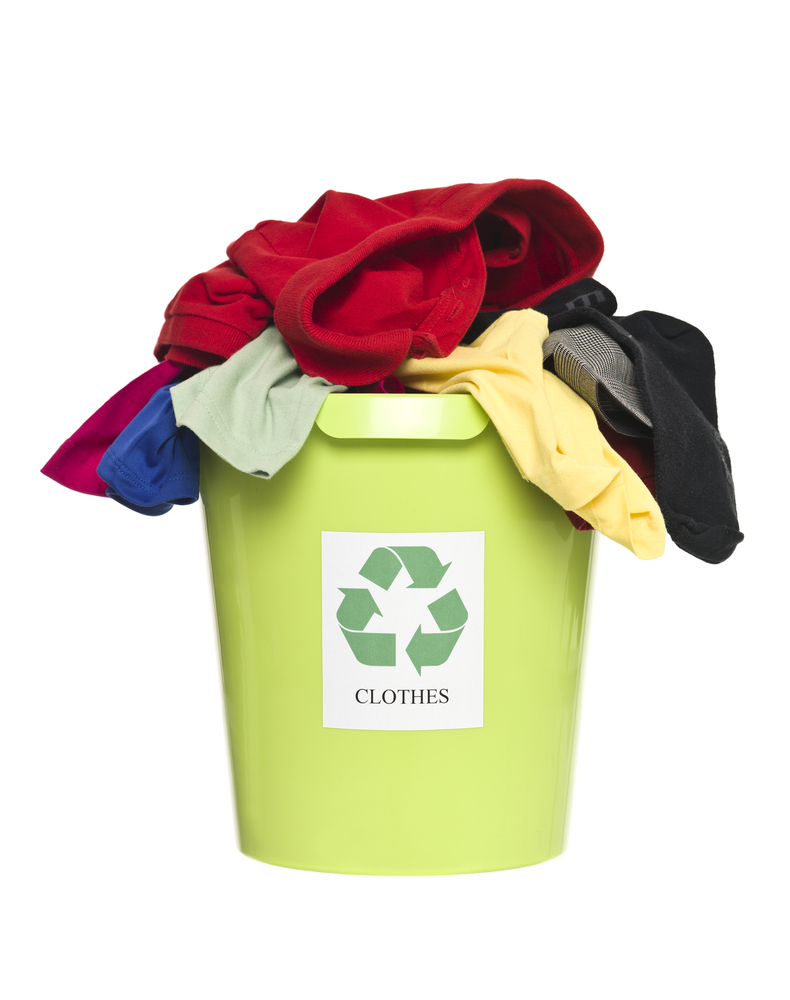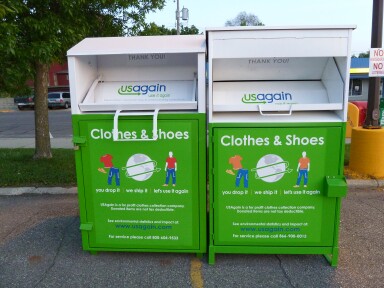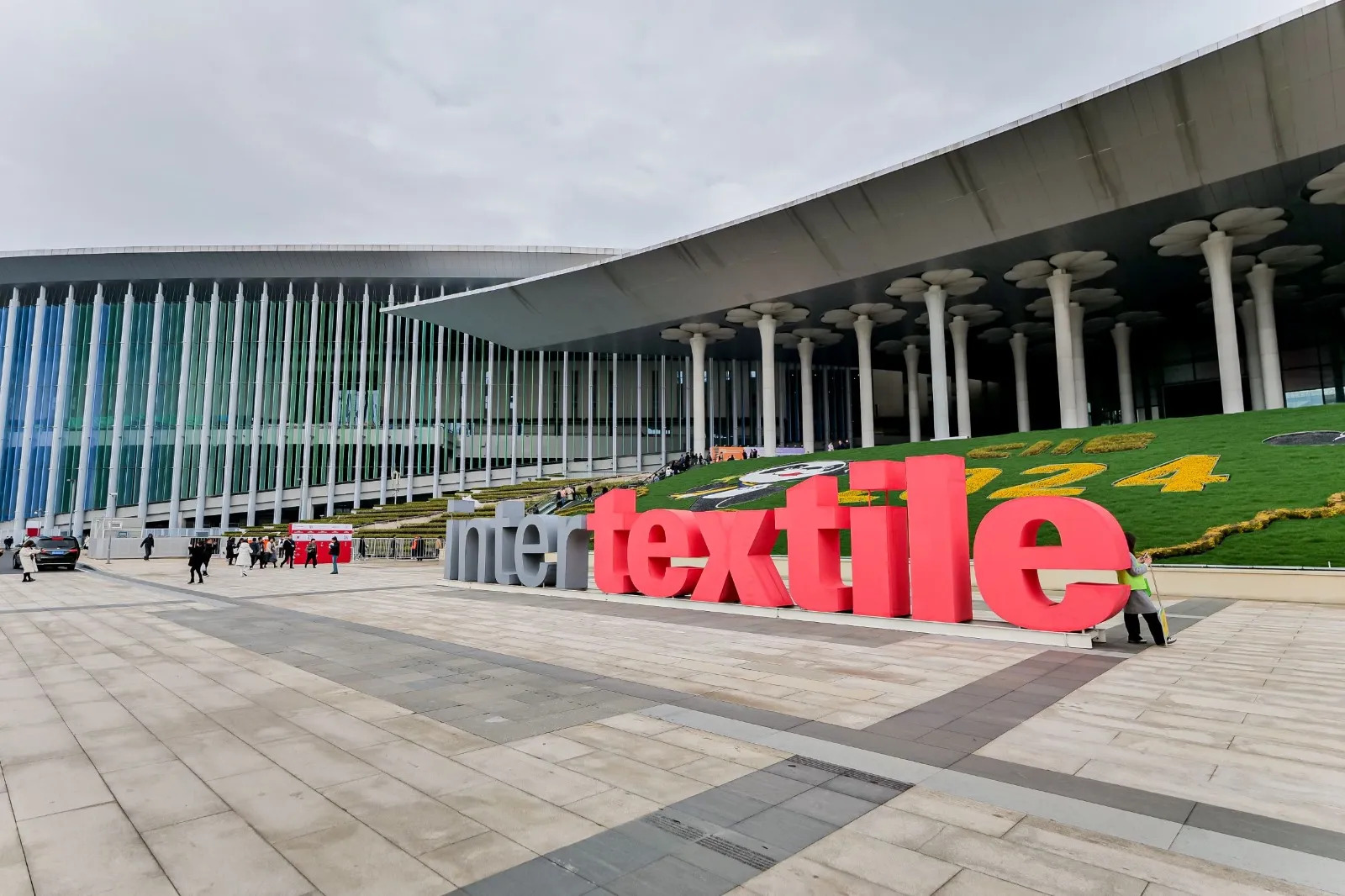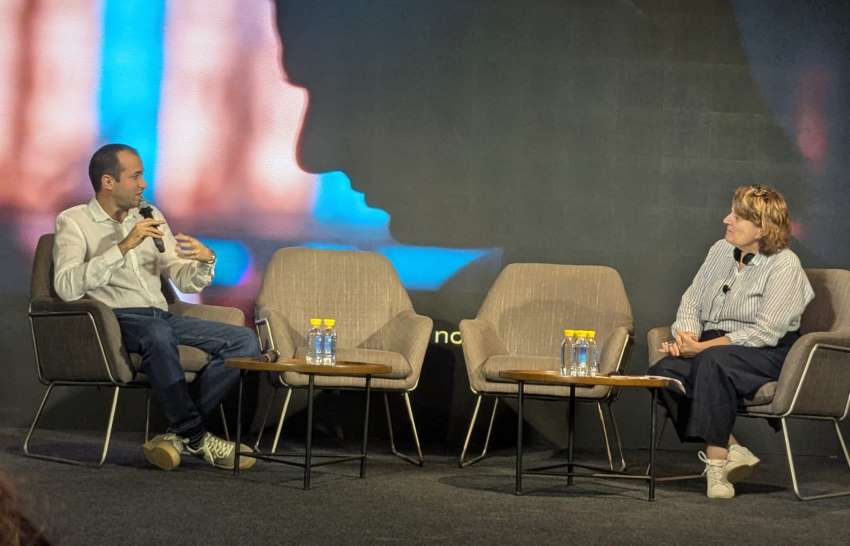FW

Re-use and recycle

Many US-based apparel companies have jumped into the fray and optedRecycling 3 for recycling old clothes. As Ira Baseman, Owner of Community Recycling points out, unlike glass, paper, aluminium and cardboard, there’s a personal contact with their clothing and footwear, so, with re-use, the piece of clothing or pair of shoes can have an extended life. Los Angeles-based Reformation and Baseman’s company together launched a programme called RefRecycling where one can get free shipping labels, pack up the clothing items no longer wanted and send them away for free. Reformation runs the first sustainable sewing factory in the US.
In fact, top brands such as H&M and American Eagle Outfitters are collecting used clothes and recycling them either through donations to thrift stores or breaking down the garments to be remade into new clothes or other products. According to Reformation and Community Recycling, each year, only 15 percent clothes, shoes and accessories are recycled. The remaining 85 per cent, or 10.5 million tons, end up in landfills.
Yael Aflalo, Founder of Reformation says they are always trying to think of new ways of becoming a more sustainable company and with RefRecycling they can also help their customers to be more sustainable. Ensuring that the clothes people buy are made sustainably is a priority for them however, it's also important to help them with garment care and what to do with their old clothes when they're over them—and to make that as easy as it possibly can be.
The box comes with a free shipping label so you can send back items you want to recycle, when you buy from Reformation. Americans throw away 68 pounds of clothing and textiles per person say experts, each year, though all of it could be reused or recycled. Agreeing with Aflalo, Baseman says awareness needs to be raised about what to do with unwanted clothing, shoes and accessories because they are wanted items whether they will be worn by someone else or used to create something new. Thus, she says, every donation helps.
Affordable homes through clothes
Since January last year, US-based I:Collect has been gathering clothes and shoes for reuse. American Eagle Outfitters launched a program in April for Earth Day to recycle used and unwanted denim into building materials for affordable homes for Make It Right together with I:Co. Founded by actor Brad Pitt, the charity builds sustainable, affordable homes, buildings and communities for people in need. Thousands of recycled denim was collected by American Eagle Outfitters to insulate 34 homes.
Helga Ying, American Eagle Outfitters Vice-President of external engagement and social responsibility opines the partnership underscored their commitment to eliminate waste and preserve vital resources, while enabling their customers to become involved in their sustainability efforts and to truly close the loop on the textile waste cycle.
Cesar Rodriguez, Make It Right's products director feels the jeans will provide safe, sustainable installation, which is an important part of Make It Right's high-performance, solar-powered homes.
There are others too who are committed to the cause such as Neiman Marcus, whose Real Real, a consignment website lets customers turn in designer items, which weren't even purchased at the store. In turn they get paid in Neiman Marcus gift cards and earn an extra 10 percent.
Experts say recycling and reuse of clothing is on the rise as more brands are launching take-back programs, and consumers now are asking companies to be responsible for the entire life of the products they manufacture.
Karl Mayer created a mini storm at ITMA 2015. Stand C101 in Hall 5 turned out to be the meeting point of the entire warp-knitting and warp-preparation branch par excellence with a lively hustle-bustle at the stand. Oliver Mathews, Sales Vice President of the Warp Knitting Business Unit said that the first two days of the exhibition exceeded all expectations not just in terms of visitor frequency, but also in terms of high quality of the talks. His positive summary was confirmed by the Karl Mayer Business Units Warp Preparation and Technical Textiles.
Until November 14, the Karl Mayer team had approximately 670 qualified customer conversations. The clients came from 38 countries and the leading countries of origin of the exhibitors were India, China, Turkey, and Italy.
The new tricot machines presented by Karl Mayer interested visitors a lot. The HKS 4-M EL deeply impressed the public by its flexibility during pattern change made possible by the EL equipment and the HKS 2-SE machine was very convincing, especially by its Low Energy Option (LEO). Crowds are flocking to the Warp Preparation unit and the new all round sectional warper PRO WARP and the extra-wide MULTI-MATIC MM 128/3.600 is grabbing eyeballs.
Besides, Karl Mayer’s new WEFTTRONIC HKS for the production of semi-technical articles of completely new style was also a hot topic of several discussions.
Taiwanese textile machinery industry’s unique topics are technology, sustainability, and innovation, which were discussed during the international press conference ‘Dress the Future’, organised by the Taiwan External Trade Development Council (TAITRA) during ITMA 2015. Five Taiwanese companies, PaiLung, A K Dyeing Machine, ACME, Jen Haur, and CCI Tech came together at the event to strengthen their global reputation and exhibit leading products in Italy. Italy is the fourth largest market for Taiwanese textile machinery exports and represents one of the most strategic markets for Taiwanese exports in the textile industry.
From an agricultural economy, Taiwan has transformed to one of most technologically advanced countries not only in Asia, but across the world, in just 50 years. In terms of innovation Taiwan ranked eighth as per the World Economic Forum’s Global Competitiveness Report 2013-2014. It was also the top country globally in terms of the state of its cluster development. A major part of Taiwan’s success can be attributed to the machinery industry’s success of positioning themselves as key players in the international market. This can be seen in the country’s exports figures, which have risen 2.9 percent, from $3.41 billion last year to $3.51 billion this year.
Taiwanese companies have gained a considerable market share and have allowed Taiwanese producers to increase their exports to China, the US, Japan, and Italy because of their ability to respond efficiently to the needs of the international market in terms of producing eco- sustainable products and machinery, and the mix of innovation and green technology.
Companies offer cutting edge technology of machinery for the textile and dyeing materials, along with the software used and the expertise of highly skilled engineers at B2B specialised events.
Pakistan’s value added textile exports declined 13.42 per cent in the first quarter of the current fiscal year. During the same period, overall exports of Bangladesh increased by 4.95 per cent and Vietnam’s by 9.20 per cent, whereas overall exports of China and Sri Lanka decreased negligibly by 2.50 per cent and 4.50 per cent.
Pakistan’s textile industry feels value added textile exports would plunge by approximately 20 per cent if the sales tax imposed on exports is not withdrawn. The government did not withdraw the two per cent sales tax on exports but increased the tax on exports by 50 per cent in the budget for 2015-16.
In the fiscal 2014-15, overall exports declined by around five per cent. The industry feels that if the major causes are not addressed, and if the value added textile sector is not supported, and if its grievances in terms of the cost of doing business are not evaluated in comparison with regional competing countries, Pakistan’s exports would never increase.
Pakistan Apparel Forum wants the cost of all essential utilities to be brought down to the level they are in neighboring and other competing countries, and priority to be given to export oriented industries in the supply of all utilities without interruption.
Shima Seiki has introduced innovations in its computerised flat knit technology. The flagship Mach 2XS features Shima Seiki’s original slide needle on four needle beds and offers higher efficiency and greater stability while knitting with an expanded range of patterning capability.
The SWG-N2 whole garment knitting machine offers increased color capacity as well as the capability for producing industrial textiles. SRY123 LP features loop presser beds and is capable of producing fabrics with woven textures as well as technical textiles.
The yarn unwinding option is an essential tool for industrial textile applications, providing a smooth and stable yarn feed of material that is normally difficult to feed into knitting machines, such as metallic and mono filament yarns.
The SDS-One Apex 3 system is at the core of the company’s total fashion system concept. With comprehensive support of the knit supply chain, Apex 3 integrates knit production into one smooth and efficient workflow from planning and design to machine programming, production and even sales promotion.
Virtual sampling through photo-realistic simulation minimises the need for sample making, effectively reducing time, material and cost from the sampling process. Apex 3 also supports design and simulation in various other industries such as circular knitting, weaving, pile weaving and printing.
www.shimaseiki.com/
A panel discussion ‘From Fiber to Fashion, Style to Sustainability: New Visions for Denim’, at the 17th annual New York Fashion Conference at the City University of New York’s Graduate Center, highlighted the future success of denim business and its dependence on fully embracing product innovations with cutting-edge sustainability practices. The conference’s theme this year was ‘Trailblazers’ and industry pioneers, François Girbaud, Founder and Owner, Marithé+François Girbaud, and Adriano Goldschmied, aka the Godfather of Denim presided the denim panel discussion.
One of the first to use stone and acid washing techniques on jeans as well as engraving with light Girbaud and Marithé Bachellerie later included technical innovations such as use of lasers and ozone for various denim effects. However, in retrospect, Girbaud said, it was a mistake, which resulted in the development and use of more sustainable practices and less chemicals. Now, fashion is changing for the better and people have become more environmentally aware following the Fukushima nuclear power plant explosion in 2011.
Goldie, Diesel, Replay, Gap 1969, Citizens of Humanity, AG and Goldsign, are brands by Goldschmied. Agreeing with Girbaud he said that traditional cotton approaches require a lot of water. Therefore he has incorporated use of cellulose fibres such as Tencel and Modal by Lenzing in his products. Also, he now uses Lycra for stretch denim and added that they were now looking forward to sustainable trends. He believes that the denim industry has to adapt processes that have much less impact on the environment and innovative product development is also needed; thus, technology is the real partner of innovation of the industry today.
Beaulieu Fibers International is a leading European polypropylene staple fiber supplier. The company’s industry-reference polyolefin fibers are valued in diverse market segments for ensuring top performance and more sustainable processing of lightweight nonwovens and composites. Its fiber technologies have advantages for geotextile and automotive component manufacturing.
High quality fibers play a crucial role in delivering the specifications promised by machinery manufacturers. Beaulieu’s industry-reference fiber innovations bring a different level of performance to these machines that can contribute to greater sustainability and the ability to maximise return on investment.
The company’s fiber families for each composite blend – PET, natural and mineral fiber – are individually customised and designed for processing on the specific equipment types for each processing technology, to support optimal production and yields. Each offers dimensional stability and excellent elongation capacity, not just during nonwoven production, but also during further processing steps.
The company through its Italian subsidiary also offers tailor-made hygiene fibers for improved softness and coverage. These fibers are designed to improve softness and bonding in nonwovens made for the hygiene market, but can be also used in any other application where a good bonding strength is required.
beaulieuinternationalgroup.be/
Italy-based Tonello is a global specialist in garment finishing technologies. Now, the company has developed a special finishing technique that can age denim exactly like stone washing, without employing chemicals or pumice stones. The innovation brings sustainable technology to the industry.
Instead a stainless steel abrasive drum is fastened to the washing machine. This drum can create a variety of finishes through flexible abrasion adjustments to create a variety of looks and styles. Due to the mechanical – rather than chemical – nature of the process, the effect is the same as that of stone wash and reduces carbon footprint created by using pumice stones.
The process will reduce water consumption, production costs, carbon footprint, processing time and manual labor. It eliminates the dust and sludge generated from stones, it doesn’t damage the machine, as pumice stones do, and creates desired the finish effects in both sampling and production machines.
Also it has been developed to be applied on all Tonello machines and maintains the same load capacity, enabling easy adoption throughout denim manufacturing facilities. The lining can easily be removed, so the machine can also run normal washing and dyeing processes.
www.tonello.com/home/
The China International Nonwovens Expo & Forum (CINE), supported by Techtextil), and Messe Frankfurt’s new nonwovens event, was held in Shanghai Mart from October 14 to 16. The three-day event featured100 exhibitors and covered an area of 6,000 sq mts, which attracted nearly 5,000 visitors from 29 countries and regions. The latest issues in the Chinese and global nonwovens industries was addressed at the forum and the products featured ranged from machinery and ancillaries for nonwovens, nonwoven products, raw materials and chemicals for nonwovens, to other industry-related services.
Messe Frankfurt (HK)’s senior general manager, Wendy Wen stated that the event was created to help the industry take advantage of the high potential areas in the Chinese nonwovens industry—hygiene, medical and filtration. She added that the feedback from exhibitors and the discussions generated during the forum sessions confirmed this potential. Experts expect Chinese nonwovens industry to see impressive growth in coming years. At the moment eco-friendly and waterproof technologies are seed rapid developments, which is good for both the market and environment. They say there will also be improvement in the functionality of nonwovens due to the growing demand for quality goods by Chinese consumers
A wide range of innovative nonwovens products and technologies was showcased by CINE. Those displaying items for the hygiene, medical and filtration sectors particularly were optimistic about the market. Besides, those from the academic field also attended the event and were impressed by the new products, technologies and trends on offer.
Development of domestic technical textiles industry will be the focus of the Russian government for the next few years. As Denis Pak, Head of the Department of Development of Domestic Trade, Light Industry and Consumer Market of the Russian Ministry of Industry and Trade, technical textiles is considered the most promising segment of the Russian light industry. Linen and wool currently occupy a small share of the Russian market, and it is steadily declining. The consumption of polyester and viscose, in contrast, is steadily growing.
Historically, the Russian light industry was focussed on natural raw materials, and in particular cotton, wool, linen, while the production of synthetic fibres and technical textile materials was insignificant. However, as per calculations, the technical textile industry could potentially provide the largest contribution to GDP. Hence the plan to focus on development of this segment during the next several years.
The implementation of a series of investment projects in the field of technical textiles in Russia should provide import replacement in the domestic technical textiles market that would amount to 70 billion rubles ($1,2 billion) a year, according to the Russian Ministry of Industry and Trade. Besides, funds would be allocated to further expedite the R&D activities in the field of technical textiles and in particular those aimed at developing new types of synthetic fibres and yarns.












